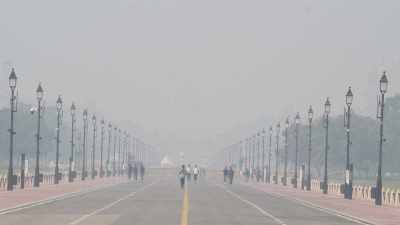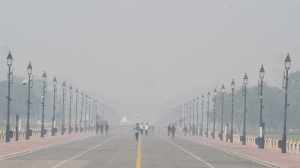Lake Ugly in City Beautiful
A national wetland is dying, thanks to official apathy. Lack of timely preventive measures by the Chandigarh Administration has proved dis...

A national wetland is dying, thanks to official apathy. Lack of timely preventive measures by the Chandigarh Administration has proved disastrous for the once majestic Sukhna lake of the City Beautiful.
Sukhna, which adorns the foothills of the Shivaliks, and attracts a large number of tourists, no longer boasts of its original grandeur. Huge levels of silt, severely depleted water levels, apart from the dense growth of weeds and parthenium, tell the sad story of Sukhna’s gradual decline.
The lake was created in 1958 and was declared as a National Wetland on July 6, 1988. While this tag was the source of much pride for city’s administrators, no one really bothered about adopting long term strategies to keep the lake alive.
The artificial man-made lake receives water from the Shivalik hills. Unfortunately, with the water came the silt. The figures of the water level of the lake is revealing: from an average of 17 feet when the lake was formed in 1958, to an average of a meagre five to six feet at present. Initially, the lake at its deepest point was at least 30 feet. Alas, no longer.
Administrators have expressed some hope that the wet dredging project, which they say will increase the average depth of water to about 12 feet, will help salvage the lake. But the proposal has yet to be put into action. For some reason, things have got unreasonably delayed. While there is talk that negotiations are underway with the Dredging Corporation of India, the will to get the dredging plan off the ground seems to be lacking. After all the plan dates back to 1979 and it is yet to take shape!
Sources say that the wet dredging proposal was to have started towards the end of the current monsoon, but it has already been put off until November. And with the Asian Junior Rowing championship scheduled for December, work is bound to be stalled further. Perhaps it will taken another year before it comes into operation.
Apparently disturbed by the declining level, officials now claim that they are systematically working towards reviving the lake. As the chief engineer of the Union Territory puts it, “The aim to bring the level to 1148 feet which will give an average depth of 12 feet on an average.”
So heavily silted is the lake that even a boat cannot sail in some regions. In fact the entire catchment area is heavily silted. Its total storage capacity which was 10.4 million cubic metres in 1958 has come down to 4 million cubic metres. Things would have been worse if citizens’ groups had not taken the initiative and conducted a shramdaan programme from 1988 onwards, to desilt the lake manually. But there is a limit to what can be achieved in this fashion. The root of the problem lies in the fact that while a limited quantity of silt can be manually removed through shramdaan, it gets deposited in much larger proportions thus bringing to naught all the effort put in.
Officials claim that a series of check dams in the catchment area of the lake has also helped. Says UT Director Environment, H.S. Sohal, “Some 160 dams of this kind were built to prevent silt from flowing into the lake, which have helped save the lake.” Sohal adds that although it is not possible to keep the silt inflow to zero levels, the steps taken by the administration have helped save the lake from extinction. “Had such steps not been taken, the lake would have had zero capacity by now,” he says. Officials also point out that afforestation projects undertaken by them have also gone some way in arresting the rapid deterioration of this water body.
Yet, the fact is that there is very little to show for all these claims. The reason for this is not far to seek. There is a complete lack of coordination between the various aencies attempting to save the lake. It seems to be nobody’s baby. With different departments handling different assignments and projects, no one is obliged to assume total responsibility for its maintenance or stand accountable for its marked deterioration.
What is required is a comprehensive rehabilitation of the lake. The obvious solution still lies in completely desilting the lake. In the current year, some 32 lakh cubic metres of silt was removed. The corresponding figures for last year was an unsatisfactory 19.65 lakh cubic metres.
Apart from the problem of siltation, the environment surrounding the lake is in a deplorable state. An island, which was developed as Sukhna’s “showpiece”, is today covered with a dense growth of Congress grass. A tower and the `Open Hand’ structure built on the island, although illuminated, are today in poor shape, with broken glass and ugly beehives.
No maintenance cost has been set aside for the maintenance of the island, on account of which it is rapidly becoming a junk yard. Unless urgent measures, including desiltation, are taken to reclaim this corner of Chandigarh, the future of the lake seems extremely bleak.
SUKHNA’S WOES
* The water level of the lake has fallen drastically — from an average depth of 17 feet to an average of a mere six feet.
* The average level of the lake bed has risen from 1130 feet above sea level to 1152 feet above sea level.
* Its surface area has been reduced from 565 acres to 342 acres.
* Its total covered area has declined from 2.28 sq km to 1.52 sq km.
* Its total water-holding capacity has gone down from 10.4 million cubic metres to 4 million cubic metres.
* Its water storage capacity has fallen from 8,710 acre feet to 2,782 acre feet.
Readers can send feedback to focus@expressindiacom.
>





- 01
- 02
- 03
- 04
- 05


























